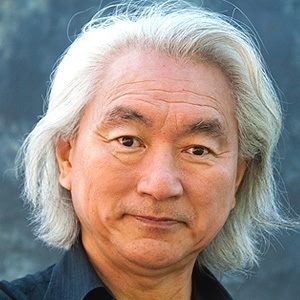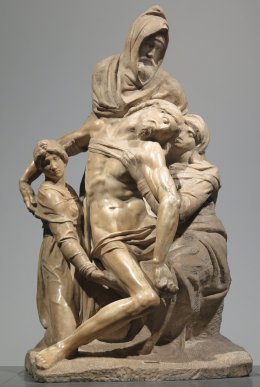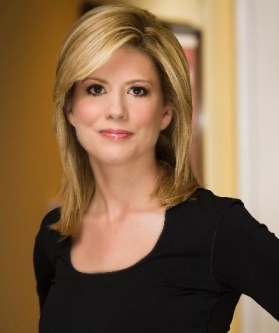Jay L. Wile's Blog, page 38
July 4, 2016
The Interesting Story of Galileo’s Tomb
Galileo’s tomb in the Basilica of Santa Croce in Florence, Italy (click for larger image)
My wife and I are currently in Italy, and I can’t express what it means to actually see some of the things I have been writing about. In one of my elementary science books, Science in the Scientific Revolution, I spend 8 lessons discussing Galileo Galilei, who lived from 1564 to 1642. He was the greatest natural philosopher (scientist) of his day, and he set the stage for Sir Isaac Newton, who would revolutionize the study of physics forever.While he aided our understanding of many aspect of Creation, he is best known for his contributions to astronomy. Based on a friend’s description of a Danish “spyglass,” Galileo made a telescope and used it in his study of the heavens. He discovered sunspots, the four largest moons of Jupiter, mountains and valleys on the moon, and most importantly, the phases of Venus. The moons of Jupiter as well as the phases of Venus supported the idea championed by Copernicus – that the earth orbited the sun, which sat at the center of the universe.
In an effort to communicate these things to other natural philosophers, he wrote a book entitled Dialogue Concerning the Two Chief World Systems. Even though it was accepted by two different Roman Catholic censors (one in Rome and one in Florence), it was eventually used by certain members of the Roman Catholic church to put him on trial. The ruling based on the trial declared that Galileo was:
…vehemently suspected of heresy, namely, of having believed and held the doctrine – which is false and contrary to the sacred and divine Scriptures – that the Sun is the center of the world and does not move from east to west and that the Earth moves and is not the center of the world…
As punishment, he was placed under house arrest for the remainder of his life.
(If you want a more detailed discussion of this saga, I have one here.)
The point, of course, is that the judgement rendered by the Roman Catholic church made his family hesitant to bury him where the rest of his family was buried – The Basilica of Santa Croce. They were afraid it would anger prominent people in the church, so he was buried in the Novitiate Chapel that is connected to the basilica. Nearly a hundred years later, however, his admirers were able to exert enough influence and spend enough money for the elaborate monument pictured at the beginning of this post, which is in a prominent place in the basilica. His body was exhumed and moved there in 1737.
One very interesting aspect of the tomb is its location. It is directly across from the tomb of Michelangelo, who died within a few days of Galileo’s birth. Some say that spot was chosen because there was a popular belief that Michelangelo’s spirit left his body and went to Galileo. I don’t know if that’s true, but I can say that the location indicates that his admirers wanted to tell the world that Galileo was a treasured son of Florence, as was the famous artist.
Another very interesting aspect to the tomb is that there are actually two bodies inside. One, of course, is the body of Galileo. The other is the body of his daughter, Sister Maria Celeste. When Galileo was exhumed, the body that was thought to be Galileo’s was actually that of a woman! Galileo’s body was found underneath the woman’s body. It turns out that his pupil, Vincenzo Viviani, had secretly buried his daughter there, apparently as a posthumous gift to him. As a result, both bodies now rest in the tomb.
One final thing that I find interesting is that when Galileo’s body was moved, his admirers took three fingers, a tooth, and a vertebra as “keepsakes.” The vertebra is kept at the University of Padua, where Galileo taught for many years. The tooth and fingers are on display in the Galielo museum in Florence. I couldn’t get a good shot of them because of glare, but here are the two containers that hold the bones. The brown, wooden container holds two fingers and the tooth. The glass container holds the middle finger.

While it might seem odd to you and me (my wife said, “disgusting”), bones of important people (usually saints) were commonly collected and often venerated. Once again, this is a symbol of how important Galileo was to many people.
June 29, 2016
Insightful Words from Michelangelo
The Florence Pieta by Michelangelo
(click for larger image)
Today, one of the many places we visited was the New Opera del Duomo Museum. It holds many artifacts related to the Cathedral of Florence, as well as many works of sacred art. It had a piece by Michelangelo that I had never heard of before – the piece pictured on the left. It is Michelangelo’s Florence Pieta, which is quite different from his most famous Pieta. He had intended it to mark his own grave, but he got frustrated with it and intentionally broke it. After he died, it was restored by Tiberius Calcagni, an apprentice to Francesco Bandini. The piece contains the body of Christ taken down from the cross, Nicodemus, Mary Magdalene, and the Virgin Mary. Most historians say that the face of Nicodemus is a self-portrait of Michelangelo.
While the piece is magnificent and was a complete surprise to me, there was something else in the exhibit that was even more magnificent (in my estimation) and even more of a surprise. It was a piece written by the master artist himself near the end of his life. While his words are about him and his profession, I think they can apply to anyone who has a devotion to his or her career:
The course of my life has now brought me
through a stormy sea, in a frail ship,
to the common port where, landing,
we account for every deed, wretched or holy.
So that now I clearly see
how wrong the fond illusion was
that made art my idol and my king
leading me to want what harmed me.
My amorous fancies, once foolish and happy:
what sense have they, now that I approach two deaths-
the first of which I know is sure, the second threatening.
Let neither painting nor carving any longer calm
my soul turned to that divine love
that to embrace us opened his arms upon the cross.
(Timothy Verdon, The New Opera del Duomo Museum, Mandragora 2015, pp.64-66)
June 27, 2016
Flowers Use Electricity to Communicate With Bees!
A bumblebee on a flower (click for credit)
Most people know about the incredible relationship that exists between bees and flowers. Flowers produce pollen and nectar, which the bees love. So the bees come to the flower to collect them. Because a single bee visits several different flowers, it ends up passing pollen from one flower to another, which is the way flowering plants reproduce. In this way, flowering plants feed bees, while bees aid in the plants’ reproduction.There are several means by which flowers attract bees, such as shape, scent, color, and even ultraviolet-reflective patterns. Over the past few years, researchers have found an additional one: electricity. Back in 2013, researchers determined that while bumblebees develop a positive charge, flowers tend to develop a negative charge. In addition, different species of flowers produce different patterns of negative charges. Using some pretty clever experimental techniques, the researchers showed that bumblebees use those patterns of negative charges to help them identify the best sources of nectar and pollen.1
Most of those same researchers now report that they have identified how the bumblebees detect the electrical charges displayed by flowers. They use the hairs (called filiform hairs) that cover their bodies. While these hairs detect motion and sound, the authors showed that they also respond to electric fields. The way they respond allows the bees to “read” the electric field on a flower.2
What good does that do? Well, remember that the bees are positively charged. When a bee lands on a flower, then, some of the negative charges on the flower are neutralized by the positive charges on the bees. This changes the pattern of the flower’s electric field. When that bee leaves, the pattern remains changed until the flower can replenish the negative charges that were neutralized. If another bee approaches that same flower, the altered pattern of electrical charges will tell it that a bee has already visited the flower, and therefore the flower isn’t a great source of nectar and pollen!
So this really is a form of communication between the bees and the flowers. A flower “advertises” that it has what the bees want. Once a bee visits the flower, however, its advertisement changes to say “come back later, when I have had a chance to remake what you need.”
God has designed an intimate, detailed relationship between flowering plants and their pollinators. The design is so complex that the more we study it, the more it surprises us!
REFERENCES
2. Gregory P. Sutton, Dominic Clarke, Erica L. Morley, and Daniel Robert, “Mechanosensory hairs in bumblebees (Bombus terrestris) detect weak electric fields,” Proceedings of the National Academy of Sciences of the United States of America 2016, doi:10.1073/pnas.1601624113
June 16, 2016
Deer Sense the Earth’s Magnetic Field

A herd of roe deer on snow. (Click for credit)
There are many animals that sense the earth’s magnetic field. Monarch butterflies, for example, sense the magnetic field and use it to aid in navigation during their amazing migration.1. Salmon seem to “imprint” a picture of the earth’s magnetic field at the point where they enter the ocean, and they later use that imprint to navigate back to that same point when they return to their birthplace to spawn. Homing pigeons also sense the earth’s magnetic field and use it as a part of their navigation.
Years ago, I read about a study that seemed to say cattle tend to align with the earth’s magnetic field while they graze. It perplexed many scientists, and some didn’t want to believe it. After all, cattle don’t navigate long distances! Why in the world would they need to sense the earth’s magnetic field? However, the study seemed to stand up to scrutiny. When I am speaking, I often use it as an example of experimental data that make no sense, but nevertheless seem to be true. I further suggest that rather than fighting against the conclusion of the study, someone should try to figure out why cattle seem to have a magnetic sense.
Well, no one (to my knowledge) has done that for cattle, but someone has done it for roe deer, which are pictured above. Roe deer tend to congregate in flat areas, so their herds are easy to watch from a distance. Researchers studied them in 60 different locations in three hunting grounds in the Czech Republic. They observed the way the deer faced while they were grazing and, more importantly, how the deer reacted when they were startled.
They found that the deer tend to align their bodies along north/south magnetic field lines while grazing. Then, when startled, they tend to run north or south, regardless of the direction from which the threat comes. These behaviors were more pronounced when the deer were in large herds.2
Why do the deer bother sensing the earth’s magnetic field? Based on their observations, the authors suggest:
…an important function of this behavior is to coordinate the movement in the group, to keep the common course of escape when frightened and to maintain the cohesion of the group.
In other words, it helps the deer escape without running into one another, and it helps them regroup once the threat is gone.
The authors say that this is the first confirmed case of mammals using the earth’s magnetic field to navigate. I suspect that it is merely the first of many. The more I learn about Creation, the more in awe I am of its Creator.
REFERENCES
June 13, 2016
No, Dr. Michio Kaku Hasn’t Proven God’s Existence!

Dr. Michio Kaku, theoretical physicist and “futurist” (picture from his Facebook page)
The headlines are screaming it. Christian Today says, Top scientist claims proof that God exists, says humans live in a ‘world made by rules created by an intelligence.’ The Geophilosophical Association of Anthropological and Cultural Studies proclaims, Scientist says he found definitive proof that God exists. ChristianHeadlines.com says, Respected Scientist Says He Found Proof God Exists. At last! We now have definitive, scientific proof For the existence of God, right? Wrong!
I guess this story broke when I was busy getting ready to go to Salt Lake City to speak at a homeschool convention, because I hadn’t seen it until someone emailed me the Christian Today article and asked me what I thought of it. Since then, several other people have contacted me via email and Facebook to get my thoughts. Initially, I only glanced at the article, but even with that little glance, I was incredibly skeptical. The article claims to report on the work of Dr. Michio Kaku, a theoretical physicist who had done some cutting edge research a couple of decades ago, but is more of a “scilebrity” today, promoting science and his ideas about the future on television shows, etc.
According to the article, Dr. Kaku was conducting tests on “primitive semi-radius tachyons” and decided that his tests told him that we live in some sort of “matrix” that was made by an intelligence. This bothered me a lot. Tachyons are theoretical particles. We have no idea whether or not they exist. If they exist, they travel faster than the speed of light, so it’s hard to know how in the world we could ever detect them, much less conduct tests on them. I have no idea how such particles can tell us something about the nature of the universe. I looked in vain for an article on the subject authored by Dr. Kaku himself. I then went to his Facebook page, which made no mention of this “monumental discovery.”
Since I couldn’t find anything written by Dr. Kaku, I decided to investigate these “primitive semi-radius tachyons” myself. I had never heard that term before, but then again, I am not a particle physicist. So today, I tried to find the term in my reference books. I could not. When I did an internet search on the term, the only hits I got were to articles about this supposed discovery. As a result, I seriously doubt that primitive semi-radius tachyons exist, even in the minds of theoretical physicists.
However, searching for that term did lead me to some Spanish websites, which show that this is actually an old story. This website posted the same story more than a year ago. Through the magic of Google Translate, I learned that this website decided the story was a hoax more than two years ago. Apparently, the hoax started on Spanish websites and has now made its way to English websites.
I think science offers a wealth of evidence to support the belief that God exists. However, as far as I can tell, Dr. Michio Kaku has not offered any.
June 9, 2016
An Unexpected Consequence of the Fukushima Disaster

The thyroid gland is an important part of the endocrine system.
On March 11 of 2011, the most powerful earthquake known to have hit Japan struck near the east coast of Honshu. The earthquake generated a tsunami that reached a height of more than 130 feet. One of the many things that happened as a consequence of the disaster is that some of the reactors at the Fukushima Daiichi Nuclear Power Plant went into meltdown, and radioactive substances were leaked into the ocean and released into the air. People in a 12-mile radius around the power plant were evacuated. I have written several posts about the incident (here, here, here, here, and here), and I will continue to do so whenever new information comes to light.Much of the discussion about the nuclear power plant disaster revolves around its long-term consequences. Since we know increased exposure to radiation can lead to an increase in cancer risk, it is natural to think that there will be an increase in cancer rates for people who were living or are living near the disaster site. Thyroid cancer is particularly sensitive to a common radioactive product of nuclear power plants, so it is assumed that thyroid cancer rates will climb in Fukushima. Indeed, a recent study shows a significant, persistent increase in thyroid cancers in the Ukraine that can be directly tied to the Chernobyl nuclear power plant disaster of 1986.1
Two of my previous posts (here and here) discussed the projected increase in cancer rates as a result of the Fukushima Daiichi disaster, and the balance of the evidence seemed to indicate that the increase would be rather small. However, in order to get a more direct measurement of thyroid cancers resulting from the disaster, Japanese authorities decided to screen all 368,651 Fukushima residents who were under 18 at the time of the disaster. An advanced technique (ultrasound) was used, and the results were surprising!
According to the initial analysis, the residents under 18 were up to 30 times (3,000%) more likely to have the signs of thyroid cancer than the rest of the Japanese population.2 This was unexpected for two reasons: First, the screenings took place soon after the disaster. It was thought that it would take years for significant signs of thyroid cancer to develop. Second, the Fukushima Daiichi disaster released a lot less radiation into the environment than the Chernobyl disaster, but it seemed to result in more than four times as much thyroid cancer.
Because of these surprising results, some researchers questioned the methodology used in the analysis. Specifically, they noted that the ultrasound screening employed in Fukushima is a very sensitive technique that hasn’t been widely used in Japan. They wondered if the increase in signs of thyroid cancer were simply the result of using this better screening method. As a result, some researchers decided to use the exact same method on residents of three other parts of Japan (Aomori, Yamanashi and Nagasaki) that were not exposed to significant amounts of radiation from the Fukushima Daiichi disaster. They found signs of cancer at an even higher rate than what was found in the Fukushima study!3
Because of statistical effects, the authors couldn’t say whether their results were really higher than that of the Fukushima study. As a result, they concluded that their results were very similar to those of the Fukushima report. This led them to write:
Our results suggest that ultrasound thyroid findings in children may change with a relatively short-term passing period, and that thyroid cancer may exist at a very low but certain frequency in the general childhood population.
Now please understand that the group doing the Fukushima study doesn’t agree. Indeed, they wrote a follow-up paper trying to make the case that the large number of thyroid cases they found was, indeed, related to the nuclear disaster.4 Unfortunately, their main argument revolves around the fact that in a later screening, they found signs of cancer in patients who were previously determined to be cancer-free. However, that’s exactly what you would expect if the conclusion quoted above is correct!
In the end, I think the balance of the evidence seems to indicate that an increase in thyroid cancer rates has not been seen as a result of the Fukushima Daiichi disaster. However, the studies are continuing, so we should get a better handle on this issue in several years. For right now, however, I think these results provide an important insight into the way medical research needs to be done. Just because you expect something to happen, and just because the initial studies support your expectation, that doesn’t mean your expectation is correct. Critical analysis must be done to make sure the initial studies aren’t fooling you!
REFERENCES
June 6, 2016
What Drives Young People to Atheism?

Minnesota Atheists in the 2012 Pride Parade (click for credit)
I have written about Larry Alex Taunton before (here, here, and here). I don’t think I had heard his name until I read his book, The Faith of Christopher Hitchens. I enjoyed his writing style and his intellectual approach to Christianity, so I read another one of his books, The Grace Effect. I have since moved to his works found on the internet, and I ran across an excellent piece entitled “Listening to Young Atheists: Lessons for a Stronger Christianity.” I strongly recommend that you read it.
In the article, he discusses the results of a project created by his organization, Fixed Point Foundation. The project’s participants simply asked young atheists to tell their story. They wanted to hear what caused these young people to become atheists. What they learned was no surprise to me, but I think it is worth discussing, especially for those who do not have a lot of experience with atheists.
In my opinion, the most important result that came from the project was:
Most of our participants had not chosen their worldview from ideologically neutral positions at all, but in reaction to Christianity. Not Islam. Not Buddhism. Christianity. (emphasis his)
This is certainly consistent with my experience. Most of the atheists I know were raised in the church and became atheists in reaction to what they perceived as the church’s failings. What were those failings? I suspect that most Christians will be surprised to learn them.
According to Taunton, the most common complaint was the superficial nature of what was presented in church. He highlights a young man (Phil) who was once the president of his church youth group. At the time the article was written, he was the president of his college’s Secular Student Alliance. What caused this shocking turnaround? Based on Taunton’s discussion with Phil, it seemed to be the result of a conscious decision by his church to remove a Bible-focused youth minister who was intent on teaching the youth about Scripture to a young, hip youth pastor who attracted a large number of teens to the church but knew very little about the Bible. As Taunton puts it:
When our participants were asked what they found unconvincing about the Christian faith, they spoke of evolution vs. creation, sexuality, the reliability of the biblical text, Jesus as the only way, etc. Some had gone to church hoping to find answers to these questions. Others hoped to find answers to questions of personal significance, purpose, and ethics. Serious-minded, they often concluded that church services were largely shallow, harmless, and ultimately irrelevant.
There are two lessons I think the church can take from the results of this project:
1. You do not further the cause of Christ by diluting His message. Christ’s message is not easy to hear:
Then Jesus said to His disciples, “If anyone wishes to come after Me, he must deny himself, and take up his cross and follow Me. For whoever wishes to save his life will lose it; but whoever loses his life for My sake will find it.” (Matthew 16:24-25)
When we dilute that message so it becomes “more palatable,” we drive people away from Christ.
2. Pastors must be able to answer serious questions posed by serious-minded people. This includes questions about origins, sexuality, why someone should believe the Bible, etc. No pastor can be expected to be able to answer all such questions, but the church should have members who can. Pastors need to know who those members are so they can direct people with questions to those who can help them find the answers they need.
In my humble opinion, if the church can address the two points listed above, there will be significantly fewer atheists in the world.
June 2, 2016
Homeschooling In Real Life
I was recently interviewed by Andy and Kendra Fletcher, two homeschooling parents who started Homeschooling in Real Life. They have an excellent podcast in which they discuss many of the issues related to homeschooling. I love their take on homeschooling, and I highly recommend their podcast. The episode that includes me can be found here:
http://ultimateradioshow.com/wp-content/uploads/2016/05/HIRL_104_DadsHomeschool.mp3
The entire episode is worth listening to, but my segment begins at about 19:07.
If don’t know what got me interested in working with homeschoolers, you might want to listen. It’s the first thing I discuss.
May 31, 2016
Kirsten Powers: Another Atheist Who Became a Christian
Kirsten Powers’s picture on Twitter
(click for credit)
The latest story I have run across comes from Kirsten Powers, a columnist and TV political pundit. She began her career as a Democratic Party staff assistant in 1992, helping with the transition between president Bush and president Clinton. She continued to work with the Clinton administration through 1998 and then worked for the Democrat Party in various roles. Eventually, she transitioned to being a full-time member of the political media.
In 2013, Powers wrote an article for Christianity Today. Here is how it begins:
Just seven years ago, if someone had told me that I’d be writing for Christianity Today magazine about how I came to believe in God, I would have laughed out loud. If there was one thing in which I was completely secure, it was that I would never adhere to any religion —especially to evangelical Christianity, which I held in particular contempt.
I have to say that her statement comes as no surprise. As far as I can tell, most members of the media don’t believe in God and hold evangelical Christianity in contempt.
According to her story, which is well worth reading in its entirety, her father raised her as a Christian, and she tried to believe based on the fact that she admired him so much. However, that wasn’t able to sustain her through the inevitable questioning that she experienced during her college years. After graduation, her work exposed her to to what she calls an “aggressively secular” peer group, which solidified her atheist tendencies and her contempt for evangelical Christianity. Nevertheless, she ended up dating a man she later learned was a Christian. In one conversation with him:
…he said the magic words for a liberal: “Do you think you could keep an open mind about it?” Well, of course. “I’m very open-minded!” Even though I wasn’t at all. I derided Christians as anti-intellectual bigots who were too weak to face the reality that there is no rhyme or reason to the world. I had found this man’s church attendance an oddity to overlook, not a point in his favor.
As he talked, I grew conflicted. On the one hand, I was creeped out. On the other hand, I had enormous respect for him. He is smart, educated, and intellectually curious. I remember thinking, What if this is true, and I’m not even willing to consider it? (emphasis hers)
She ended up going to church with him, and she was surprised. Mostly, she was surprised by the intellectual and intriguing sermons given by the pastor, Timothy Keller. While she initially thought he was ruining his sermons with his “Jesus nonsense,” she became more and more intrigued. This led her reading the Bible, allowing her boyfriend to pray with her, etc. She ended up making up her mind that Christianity was the most rational way to look at the world, but she didn’t feel any strong connection to the faith until she had a vision of Jesus while she was in Taiwan. This led her to a Bible study, where she ultimately came to faith.
She has discussed her faith a bit since then. For example, last year she wrote an excellent piece about Christmas, retelling her conversion story and discussing how her faith has changed her view of that holiday. In addition, she announced on Fox News that she is joining the Catholic church. I hope she eventually writes about what led her to that decision.
To me, the most important part of her story is her need to appear open-minded. That’s what caused her to start seeing what Christianity is really all about. I find that interesting, because some Christians have a pretty dim view of being open-minded, and I find that sad. As I have written previously, I believe that I am a Christian today specifically because I was an open-minded atheist. While Kirsten Powers doesn’t believe she was really open-minded, she ended up becoming a Christian because she felt like she had to at least appear to be open-minded.
If you fear being open-minded, just remember the words of Lord William Thompson Kelvin, who is honored by having the most commonly-used absolute temperature scale named after him. In a 1903 article in The Times (a British newspaper), he wrote:
Do not be afraid of being free thinkers. If you think strongly enough you will be forced by science to the belief in God, which is the foundation of all Religion. You will find science not antagonistic, but helpful to Religion.
May 27, 2016
Going Back to College (Again)

Thermodynamics is the study of the relationships and conversions between heat and other forms of energy. (click for credit)
Nearly two years ago, I announced that I was going to teach a one-semester course at Anderson University. It’s one of the few Christian Universities that I am willing to teach at, because it doesn’t have a long list of doctrinal beliefs to which you have to agree. Instead, it seems to understand that the quest for truth is important and cannot be hindered by one specific interpretation of the Scriptures that has been developed by fallible people. Instead, if we are to learn the truth, we must honestly search the Scriptures, honestly study God’s creation, and honestly explore the various ideas that have emerged throughout the history of Christendom.
It was the first time in 19 years that I had taught a complete, semester-long college course, and I posted a few articles about my experience. I had a great time, and I decided that I wanted to do it again at some point in the future. Because I had some book deadlines with which to contend, however, I couldn’t do that right away. Now that my book deadlines have slowed down a bit, I have decided to go back to the college classroom once again.
This fall, I will be teaching thermodynamics at Anderson University. It is an upper-level course, typically taken by juniors. I use some aspects of thermodynamics in my research as a nuclear chemist, and it is actually one of my favorite topics to teach. As a result, I am really looking forward to it!
Thermodynamics is interesting for many, many reasons. It’s intensely mathematical, requires very precise thinking, and helps us understand a great deal about how Creation works. It also has some implications beyond physics and chemistry. For example, thermodynamics led to an enormous shift in the scientific consensus regarding the nature of the universe. For most of human history, the scientific consensus was that the universe is eternal: it has always existed and will always exist. We now know that’s incorrect. The universe had a beginning and will have an end, and thermodynamics was the first field to demonstrate this.
It’s all thanks to Rudolf Clausius, who formulated the Second Law of Thermodynamics back in 1850. He showed mathematically that while the total energy content of the universe stays the same (because of the First Law of Thermodynamics), the amount of energy in the universe that is available to do work is constantly decreasing. As a result, the universe will eventually reach a point at which there is lots and lots of energy, but hardly any of it is available to be used. He called this situation a state of maximum entropy and wrote:1
The more the universe approaches this limiting condition in which the entropy is maximum, the more do the occasions of further change diminish; and supposing this condition to be at last completely attained, no further change could evermore take place, and the universe would be in a state of unchanging death.
Of course, if the amount of energy in the universe that is available to do work decreases over time, think about what happens if you go backwards in time. The amount of energy available to do work increases. At some time in the past, however, it would reach the point where the amount of available energy equals the total energy of the universe. At that point, you can’t go back any further, so the Second Law of Thermodynamics not only tells us that the universe will end, but it also tells us that the universe had a beginning. British philosopher William Jevons put it this way:2
Now the theory of heat places us in the dilemma either of believing in Creation at an assignable date in the past, or else of supposing that some inexplicable change in the working of natural laws then took place.
Of course, the Bible always said that the universe had a beginning. It just took thermodynamics to convince the scientific community that the Bible is correct on that point.
REFERENCES
Jay L. Wile's Blog
- Jay L. Wile's profile
- 31 followers








